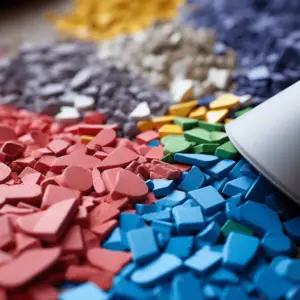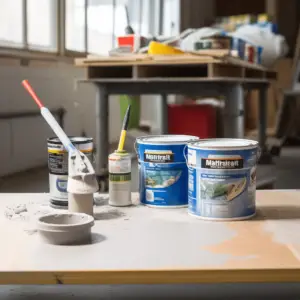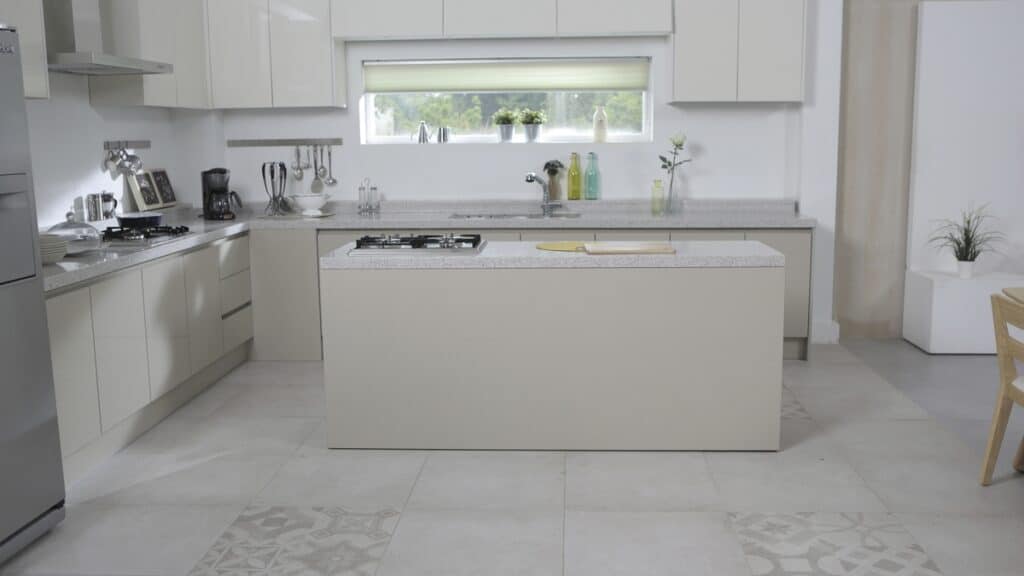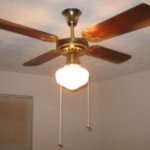Versabond and Mapei looking for an adhesive for a tiling project, you’ll want to choose the greatest one possible. This is because adhesives can make or break your project in the long run, as you want your tiles to stay in place for many years.
Mapei and Versabond are two well-known thin-set mortar brands. However, you must understand the differences between Versabond and Mapei thin-set to determine which is appropriate for your project.
This article will walk you through a quick comparison of Versabond and Mapei. At the end of it, you will be able to determine which one is suitable for your project.
Table of Contents
Versabond vs Mapei: Quick Comparison Table

| Features | Versabond | Mapei |
| Bonding strength | Strong | Weak |
| Sand grind | Large sand grinds | Regular sand grinds |
| Modifier amount | Modified (acrylic latex modifiers) | Unmodified |
| Coverage | 50 pounds for 85 sq. feet | 28 pounds for 85 sq. feet |
| Work time | It takes a longer duration | It takes a shorter duration |
| Moisture factor | Not so good | Very good |
Versabond vs Mapei: Key Differences
Bonding Strength
The bonding strength of your thin-set will determine how well it adheres to the surface and the tiles.
You’ll always want to use a thin-set with higher bonding strength.
For concrete floors and walls, Mapei provides excellent bonding strength. It also features a quick-drying mechanism, so it dries faster than Versabond.
Versabond, on the other hand, can give excellent bonding strength to plywood and concrete. In terms of bonding strength, it outperforms Mapei. This is because it contains modified agents.
Modifier Amount
A thin-set may either be modified or unmodified. The modified thin-set has polymers formulated into the dry mix. These polymers enhance the performance and strength of the thin-set.
Versabond is a modified thin-set that contains a lot of acrylic latex modifiers. The modifiers allow it to be incredibly flexible and powerful.
Mapei, on the other hand, is an unmodified thin-set. As a result, there is no latex modifier in it. In terms of modifier amount, Versabond comes out on top.
Sand Grind
One of the essential components of thin-set mortar is the sand grind. Sand grind size is important because the larger the sand grind, the more weight a thin-set can absorb. If you use a thin-set with huge sand grinds, it will not sag from the wall due to the weight of the huge tiles.
The sand grinds in Mapei thinset are larger than in Versabond. As a result, the weight of huge tiles will not cause it to sag.
The term “large tile” refers to a tile that is longer than 15 inches on one side.
Work Time
Not all thin-sets take the same duration to finish. Some require more time to set, while others require less. You can complete your project quickly if you use one that takes less time.
Versabond takes a little longer to dry than Mapei thin-set. This has both advantages and disadvantages. The con is that it will take longer to become set on the surface due to the prolonged working time.
However, because you will have more time, it will be easier to correct any mismatched tiles.
Coverage
The thin-set required to cover a given area is referred to as coverage. You’ll need less thin-set mortar if your thin-set has broad coverage. It will also save you money.
To cover an area of 85 square feet, you’ll need about 50 pounds of Versabond thin-set. On the other hand, the same area may be covered with only 28 lbs of Mapei thin-set. As a result, Mapei will provide you with more coverage.
Moisture Factor
Thin-set mortars are well-known for their ability to work in wet environments. They can be used on the floors and walls of your bathroom.
As a result, moisture is an important consideration. Thinset that has a higher moisture content is preferable.
Mapei contains a lot of moisture-resistant substances. You don’t have to be concerned about using a Mapei thin-set for shower walls.
Versabond, on the other hand, is not known for its moisture resistance. It is moisture-resistant as well, although not as well as Mapei.
Price
When it comes to thin-set mortar, the cost is a significant consideration. You’d prefer one that offers higher performance at a lower price.
A 5-pound bag of Mapei thin-set will set you back roughly $28. A Versabond 50-pound pack, on the other hand, will set you back only $15. As a result, Mapei is the most expensive.
Versabond vs Mapei: Which One Should You Use for Your Project?

You have all of the information you need. From their distinctions, you should be able to choose the best thin-set mortar.
But don’t panic if you’re still perplexed. This article will show you how to find the best fit for you.
There is no better or worse adhesive. In terms of performance, both of these thin sets are excellent.
However, you must choose the best option for your requirements. You must first decide where you will use the thin-set and then select one based on that.
If you’re doing the job yourself, Versabond is the way to go because it allows you to correct misaligned tiles. Ifs you need a powerful adhesive, though, Mapei is the way to go.
If money is a problem, consider Versabond, which is substantially less expensive. However, remember that Mapei is more costly, but you’ll need a less thin-set overall if you use it.
Frequently Asked Questions
Is Versabond Suitable for Use on Tiles?
Versabond is suitable for tiles and works best on plywood and concrete. It is also ideal for use in cold weather.
What is Versabond Thinset Mortar Utilized for?
Versabond Thinset is noted for its superior performance and bonding strength. It’s suitable for plywood subfloors, concrete floors, walls, and other surfaces. It works well with porcelain and glass tiles.
Is Mapei Thinset Modified?
Mapei thin-set is, in most instances, unmodified. However, some Mapei products have been modified. Mapei Ceramic Tile Mortar is a good example. This thin-set can be used on the shower floor and various other surfaces.


